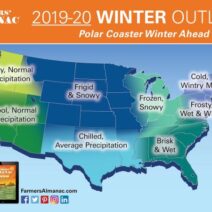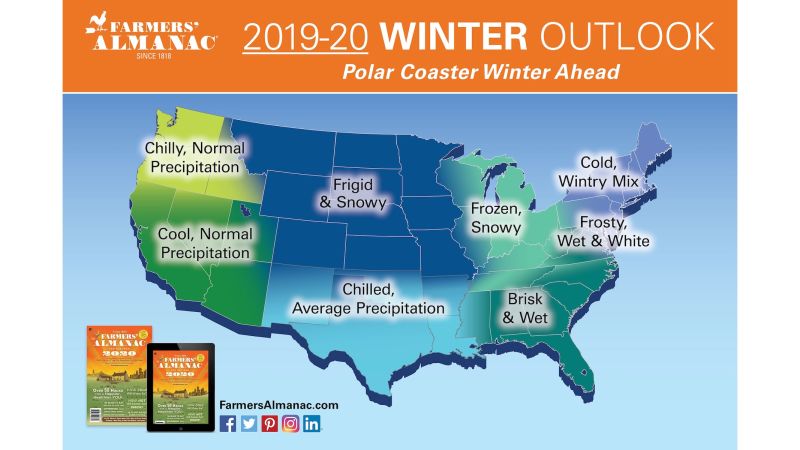The Farmer’s Almanac, a venerable institution since its inception in 1792, has captured the imagination of millions with its esoteric weather predictions and rustic charm. Yet, as the world confronts the undeniable reality of anthropogenic climate change, many ponder: can the Farmer’s Almanac offer accurate insights into the larger phenomena of global warming? This inquiry beckons a multifaceted examination of both the Almanac’s methodology and the broader dynamics of climate science.
To investigate the predictive capabilities of the Almanac, it is essential to delve into the principles that underpin its forecasts. Unlike traditional meteorological organizations that rely on cutting-edge technology and mathematical modeling, the Farmer’s Almanac employs a unique blend of folklore, patterns gleaned from celestial phenomena, and historical data accumulated over centuries. This fascinating confluence yields predictions on seasonal weather patterns, often defined by charming yet whimsical language, catering to a rural audience that values tradition and community wisdom.
One standout feature of the Almanac is its reliance on what it calls “Old Farmer’s Almanac Weather Forecasting Formula.” This formula, shrouded in secrecy, allegedly draws on a complex array of sunspot activity, lunar cycles, and a detailed recollection of past weather trends. However, it is crucial to acknowledge that the realm of meteorology has evolved significantly. Modern climatology incorporates advanced statistical methods and sophisticated computer models that accomplish predictive accuracy unattainable by historical folklore alone. Thus, one must question the efficacy of the Almanac when juxtaposed with stricter scientific methodologies.
Despite its quaint and anachronistic methods, the Farmers’ Almanac does strike a chord with many individuals who appreciate its consistency and tradition. This attachment can often stem from a broader cultural fascination with agrarian life and a longing for simpler times. Society finds comfort in rituals and lore that the Almanac embodies, particularly in an age characterized by volatility and uncertainty. The predictions elicit not just curiosity but a sense of planning, an antidote to the unpredictability of life shaped by climate change.
This brings us to the crux of the matter: can predictive tools like the Farmer’s Almanac effectively engage with the dynamics of climate change? Understanding global warming involves grappling with multifactorial issues encompassing greenhouse gas emissions, deforestation, and the feedback loops of ecological systems. The scope of climate change is expansive, often defying simple axioms because it is interlaced with social, economic, and political threads. Much like trying to knit together a tapestry while omitting critical sections, forecasts must be rooted in contemporary scientific frameworks to tackle such complexity.
When delving into the intricacies of climate science, it becomes clear that mere anecdotal predictions cannot substitute for rigorous empirical research. Numerous climate change studies underscore the urgent need for adaptive strategies in response to evolving weather patterns, more accurately forecasted by algorithms and data analytics. The intention here is not to belittle the Farmer’s Almanac, but rather to contextualize it within the broader scientific discourse on climate change. The contrast between folklore and empirical science speaks to a fundamental human desire — to connect with our environment and predict its behaviors.
Moreover, aggregate data from worldwide climate studies continue to elucidate the dire consequences of global warming, affirming that weather patterns are altering on a scale previously unimagined. Severe storms, prolonged droughts, and erratic temperature fluctuations are increasingly commonplace, and these are tangible outcomes of a destabilized climate system rather than mere anomalies to predict using historical data. This raises further questions about the legitimacy of long-term forecasts made by the Almanac in an era where variables are in flux.
Nevertheless, the Farmer’s Almanac serves as a cultural artifact, representing humanity’s perennial quest to predict the unpredictable. It embodies a bridge between the past and present, enabling reflection on how agricultural practices have adapted or resisted the changes wrought by climate dynamics. The resonance of the Almanac among certain audiences reveals an intrinsic human inclination to seek continuity amidst change, perhaps a psychological balm in troubling times.
In a world increasingly conscious of the fragility of our ecosystems, the Farmer’s Almanac invites readers to think critically about seasonal predictions while recognizing their limitations. The fascination it evokes can be harnessed to stimulate broader discussions about sustainability, resilience, and collective action against climate change. This almanac can serve not merely as a weather guide but as a catalyst for engaging with climate realities more meaningfully.
In conclusion, while the Farmer’s Almanac may hold a quintessential place within the tapestry of American culture, its ability to accurately predict global warming remains circumspect. It provides a comforting narrative and a nostalgic link to agricultural wisdom, yet it cannot supplant the scientific rigor demanded by contemporary climate challenges. The future will necessitate an amalgamation of age-old wisdom, like that found in the Almanac, and the stringent demands of scientific inquiry. Addressing the climate crisis will require a concerted effort to intertwine tradition with innovation, blending the profound with the pragmatic.






